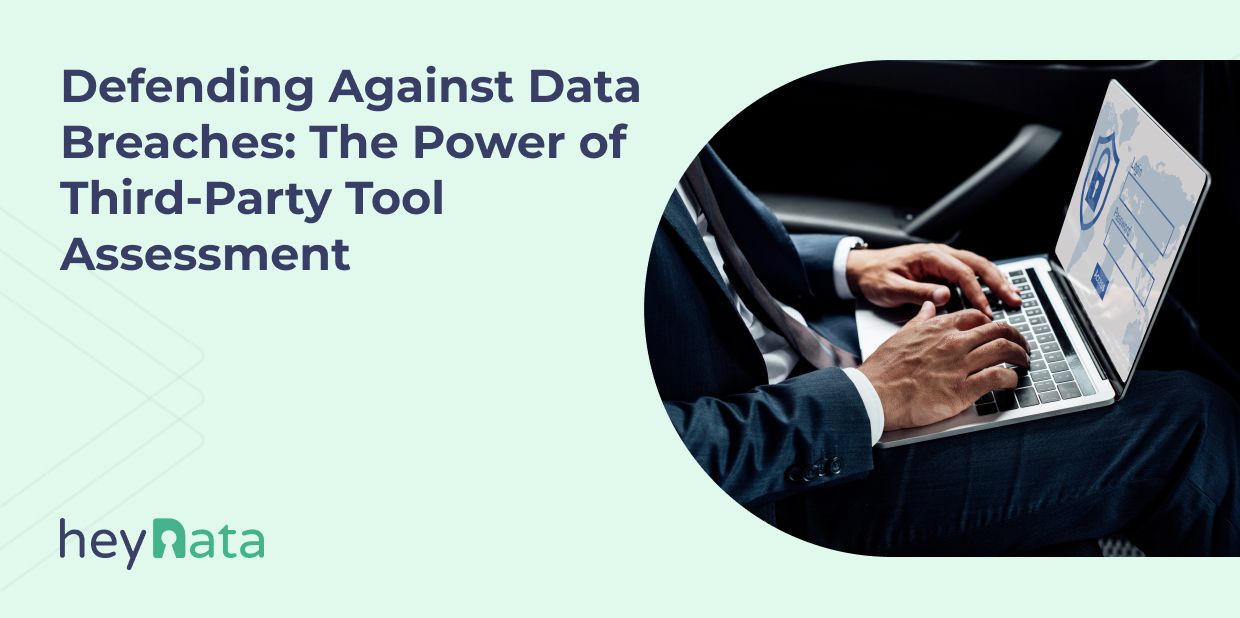
Defending Against Data Breaches: The Power of Third-Party Tool Assessment

Explore the lessons learned from the recent Okta breach and why comprehensive assessment of third-party tools is now non-negotiable for safeguarding sensitive data.
In the ever-evolving landscape of cybersecurity, staying vigilant and proactive is of paramount importance, as recent events have highlighted the critical need for businesses to have a thorough understanding of the third-party tools and services they integrate into their operations.
1Password, a well-known security company, has reported that it experienced brief intrusions by hackers in the wake of a recent security breach involving Okta's support unit. Cloudflare and BeyondTrust are among the several companies affected by Okta’s breach. Okta, a provider of single sign-on technology, revealed that hackers had infiltrated its customer support unit and accessed files uploaded by customers for troubleshooting technical issues. Some of these files contained sensitive user information like cookies and session tokens, which could potentially be used for impersonation.
In another security incident, Okta was affected through a third-party entity, Rightway Healthcare, where an attacker accessed and obtained a file containing sensitive information of 4,961 Okta employees, including names, social security numbers, and health insurance numbers. This breach carries the potential for identity fraud and sophisticated phishing attempts.
Table of Contents:
The Importance of Third-Party Tool Assessment
This incident serves as a strong reminder that even trusted service providers can be vulnerable to attacks, potentially putting sensitive data at risk. Therefore, organizations need to understand the importance of thoroughly assessing the security measures and practices of the third-party tools and services they rely on for maintaining a secure and resilient technology infrastructure, safeguarding sensitive data, and building trust with stakeholders. To address this, consider the following actionable steps:
Risk Assessment
Understanding the security and reliability of third-party tools allows organizations and individuals to assess the potential risks associated with using these tools. A comprehensive overview helps in identifying vulnerabilities and potential weak points in your technology stack.
Security Incident Preparedness
Knowing the security practices of third-party tools helps organizations prepare for security incidents and data breaches. They can have plans in place to respond quickly, minimize damage, and inform affected users.
Credibility and Reputation
Maintaining the trust of customers, clients, and users is crucial. Knowing the security practices of third-party tools ensures that your organization is not associated with tools that have a poor track record in terms of security.
Dependency Management
Understanding the dependencies on third-party tools helps organizations plan for contingencies in case a tool becomes compromised or unavailable. Limit the number of third-party tools you rely on, and consider alternatives that may offer more control and security.
Continuous Monitoring
A good overview of third-party tools is not a one-time task but an ongoing process. Regularly assessing these tools helps ensure that they continue to meet your security and reliability standards.
Legal and Liability Considerations
In cases of security incidents, organizations may need to address legal and liability issues. Having a comprehensive overview of third-party tools can be crucial in determining responsibilities and liabilities.
Vendor Selection and Data Protection
When choosing third-party tools or service providers, a good overview allows organizations to make informed decisions and select vendors that align with their security and compliance requirements. Third-party tools often have access to sensitive data or are integrated into systems that handle critical information. Assessing their security measures and practices helps ensure the protection of sensitive data and user information. Tools like heyData’s Vendor Risk Management eliminates the need for time-consuming legal research by offering key information such as data transfers, data processing risks, potential sub-processors, data processing contracts, and security details.
Incident Response
In the event of a security breach or incident involving a third-party tool, having a good overview enables organizations to take swift action, mitigate risks, and communicate effectively with affected parties.
Related topic: Warum Sicherheitsrisikobewertungen für Unternehmen jeder Größe wichtig sind
Steps for Businesses Affected Data Breach
To bolster the security of your business data and verify the integrity of your accounts, here are essential steps you can take to prevent breaches:
| Change Your Password | It's always a good practice to change your passwords. However, it's worth noting that anyone who uses strong passwords does not actually have to change them regularly, except in the event of a suspected attack or data protection incident. Go ahead and change your 1Password Master Password, as this password is not stored on 1Password's servers and is used to encrypt and decrypt your data locally on your device. |
| Enable Two-Factor Authentication (2FA) | Ensure that you have two-factor authentication (2FA) enabled for your 1Password account. This adds an extra layer of security and makes it more difficult for unauthorized individuals to access your account. |
| Check for Unusual Activity | Review your 1Password account for any unusual or unauthorized changes or activities. Look for signs of unfamiliar devices or IP addresses accessing your account. |
| Monitor Your Email | Monitor your email account for any suspicious or unexpected login notifications from 1Password. If you receive any such notifications, act promptly. |
| Be Wary of Phishing Attempts | Always be cautious of phishing attempts. Hackers may try to trick you into revealing your login credentials or other sensitive information. Verify the legitimacy of any communication you receive from 1Password. |
| Review Your Account Settings | Double-check your account settings within 1Password to ensure that no unauthorized changes have been made to your security settings, recovery information, or connected devices. |
| Contact Support | If you have any concerns or doubts about the security of your 1Password account, contact 1Password's customer support team for guidance and assistance. They can provide you with specific information related to your account's security status. |
Related topic: EU-U.S. Data Privacy Framework: Schutz von Daten in einer globalisierten Welt
Conclusion
Data security is an ever-escalating concern, and even trusted service providers can fall victim to attacks, underscoring the need for thorough assessment and ongoing monitoring of the security practices of these tools. By taking the steps outlined in this discussion, individuals and businesses can strengthen their cybersecurity posture, protect their valuable data, and maintain the trust of their stakeholders.
Optimize your data security and compliance with our Vendor Risk Management ensuring swift and dependable GDPR compliance checks for all your service providers.


